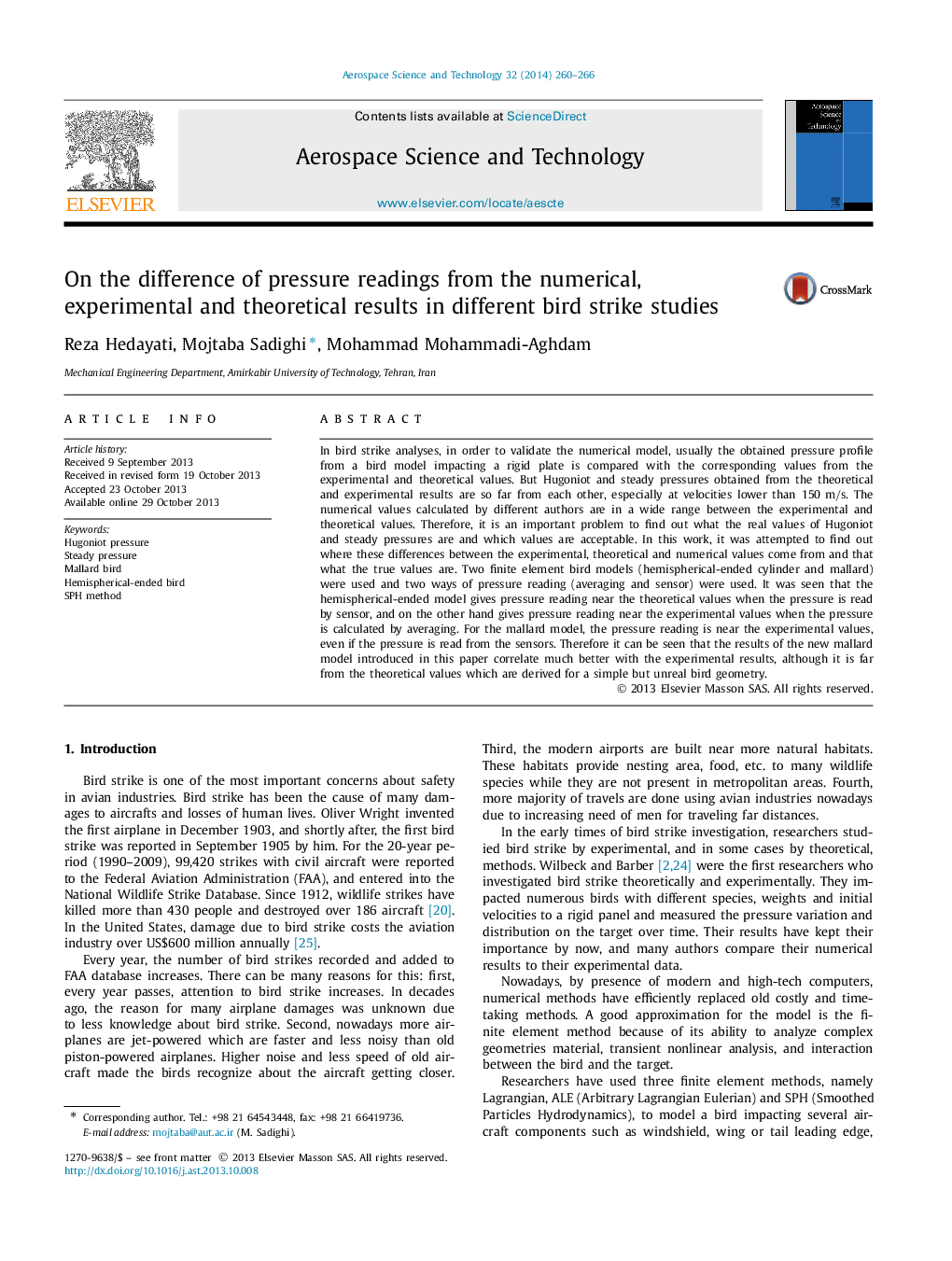| Article ID | Journal | Published Year | Pages | File Type |
|---|---|---|---|---|
| 1718113 | Aerospace Science and Technology | 2014 | 7 Pages |
In bird strike analyses, in order to validate the numerical model, usually the obtained pressure profile from a bird model impacting a rigid plate is compared with the corresponding values from the experimental and theoretical values. But Hugoniot and steady pressures obtained from the theoretical and experimental results are so far from each other, especially at velocities lower than 150 m/s150 m/s. The numerical values calculated by different authors are in a wide range between the experimental and theoretical values. Therefore, it is an important problem to find out what the real values of Hugoniot and steady pressures are and which values are acceptable. In this work, it was attempted to find out where these differences between the experimental, theoretical and numerical values come from and that what the true values are. Two finite element bird models (hemispherical-ended cylinder and mallard) were used and two ways of pressure reading (averaging and sensor) were used. It was seen that the hemispherical-ended model gives pressure reading near the theoretical values when the pressure is read by sensor, and on the other hand gives pressure reading near the experimental values when the pressure is calculated by averaging. For the mallard model, the pressure reading is near the experimental values, even if the pressure is read from the sensors. Therefore it can be seen that the results of the new mallard model introduced in this paper correlate much better with the experimental results, although it is far from the theoretical values which are derived for a simple but unreal bird geometry.
